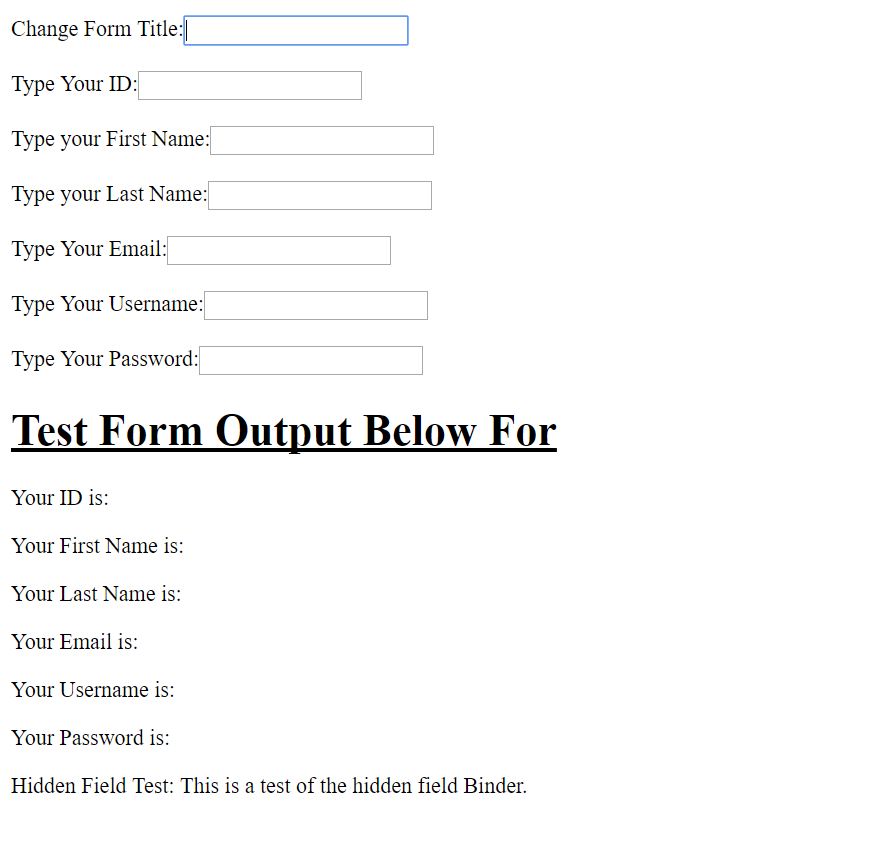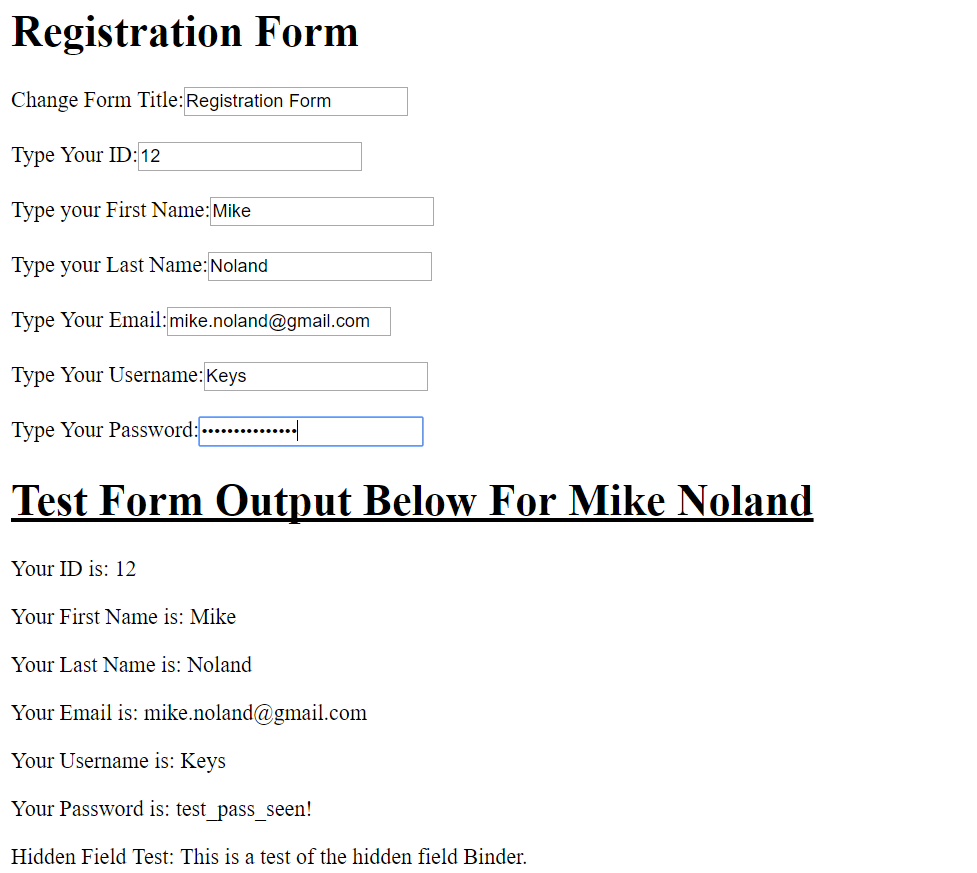The Brief History of Google's AngularJS
Disclaimer it's probably the worst together paper I've ever wrote, I didn't get finished and tell 7:40AM.
I felt like I owed you something for giving me the extension and being so generous with it. I just couldn't manage to get a good paper out of the time I had with everything else going on.
Angular.js was developed by Google as an open source way to make HTML at the time,
HTML5 now more efficient and gives a simpler way to do what would take would take
a bunch of JavaScript to achieve before angular. AngularJS's first release was
put on GitHub in 2010 on November 11 [GITHUB].
The Tech Crunch article went into depth about the second full version release of
AngularJS. It offered some insightful details on what are the big pluses to the
two versus one, and it made a point of pointing out that one and two are not at
all compatible. Article offered up some possible solutions to help you make your
decision on which version to pick. The modern progression of things is probably
go with two if you’re new to angular JS. If you’re a developer coming under
projects that are written and angular JS 1.0-1.6 what this tutorial written.
The decision whether to upgrade it is tied to availability of the money or not,
to essentially rewrite the same program in the upgraded version.The
tech crunch article also, announced the release date for angular 2.0 out of beta
in 2014,so took them four years to innovate the framework to make it even more
efficient, and make mobile development easier. In doing so as mentioned above
they made versions incompatible[TECHCRUNCH]_. The Following tutorial is in
AngularJS 1.6.
Introduction to AngularJS
- There are couple reasons that AngularJS is attractive to all kinds of developers, during this tutorial the simpler aspects of AngularJS will be examined, just the core basics to get a simple form to auto fill with information into nine in total form fields. To achieve this, you just must have a basic background in the five below topic areas. One, thing that is apparent from doing more research on the topic, that the bare basics are easy to grasp for most, and that’s all that will be presented here. Per Anton Tymchuk blog post from 2015, he explains as tech crunch did there are some drawbacks to AngularJS. He specifically covers that certain things are easier, if you the learner have had some experience with a JavaScript library in the past. If you haven’t he explains that the entirety of the framework can be difficult for you to learn as a brand-new JavaScript developer. The community is the pretty large one, another article that talks about the popularity from Eduonx explores some bigger companies that use it as the core of an application they have developed, there are few that are notable on the list that I’ll list below. [STFALCON]
- Netflix
- angularJS.org
- weather.com
- YouTube for PS3
[EDUONIX]
Directives
Directives are the NG–controller,app,or model that are part of the the HTML in the form properties below. Out of habit in the form example below, I named the form attributes the same thing to make it easier when making changes in the future, and it makes it easier to remember if you're trying to manipulate in another program.It also makes it easy when you're having to remember which directive you're trying to use is the right over in the label name so you don't have to go far.The directives here are bound to each field name, first name last name etc., now they are prepared to be able to automatically update if something is entered into an input box. The data binding just has to take place and in order for your form to work. First though you need to be stepped through the scope object, how it's used in data binding, and then discuss the properties of the data binding represented in the example. [ANGULAR_2]
Data binding and Scope
The data binding in scope principle is in general the double brackets in the double brackets with the variable name inside of it, that how you bind data to the specific element in HTML. In order to even be able to do this you need to have a scope object created with all of the elements mentioned above already typed out. Then you have to have a scope object followed by a . and then variable name to then be able to see something print to the screen. You can see in the example below that all of the scope variable names have been bound to each individual field and if you were to have access to this program you could make your own registration form with your own data. It would print the screen automatically, and as you can see it's little to no code to do so thanks to angularJS.
Module and Controller
In programming, you must have a container of some type to send all the data to the compiler, in the case of object oriented programming it’s a main method, everything must be called inside main. This is a similar concept to angular JS, but it must be inside of module method. This can be found in this the simple form example below on line 31 where variable is set to testFormApp, and that is used again on line 32. Line 32 is where the controller aspect of things come in, and this is where another parallel can be drawn if you have relatively little experience programming, the controller acts as the constructor for an object called scope which will be discussed below. The object for scope has been created so this is where the concept of the view model controller comes in, basically angular has separated the application into three parts, the angular logic, what you the user sees, and the actual information.[STFALCON]_ [ANGULAR_5] [ANGULAR_6]
An important topic to discuss when trying to implement libraries nowadays is
the use of linking in with content delivery networks.
Below CDN's are described in a little bit of detail, as they pertain to the
implementation of AngularJS the framework, and the many libraries that increase
the functionality of the framework.
Content Delivery Network Description
AngularJS has two ways of implementing the libraries that compose the entirety of the framework in your HTML pages. One, is going to the website: AngularJS and downloading the library, or you can use a content delivery network. Now, to explain further the content delivery network, it is a static or not group of Web Servers that that will always send you to a server location nearest to your IP, that is a very brief a limited description of a CDN explained in much more detail by [AMZ]. Sites that are available as content delivery networks are the two listed below in the example, and several others. Programmers can investigate CDN’s to see if they offer the libraries that they’re looking for. By searching AngularJS CDN on Google and it should come up with the most popular CDN for Angular. The CDN's that are listed below, may not necessarily come up with angular content, but they could serve up other libraries. The list came in part, in no particular order from: cdnreviews.
- Amazon cloud front
- MaxCDN
- CDN77
Examples Of Libraries Available In AngularJS
1
2
3
4
5
6
7
8
9
10
11
12
13
14
15
16
17
18
19
20
21
22
23
24
25
26
27
28
29
30
31
32
33
34
35
36 | <!DOCTYPE html>
<html lang="en">
<head>
<meta charset="UTF-8">
<title>Example of Angular Libraries</title>
<!-- This is the main library that you need to have linked, or downloaded to use AngularJS. -->
<script src="https://ajax.googleapis.com/ajax/libs/angularjs/1.4.8/angular.min.js"></script>
<!-- These are a bunch of libraries that expand the functionality of the above the above framework. -->
<script src="https://ajax.googleapis.com/ajax/libs/angularjs/1.4.8/angular-route.js"></script>
<script src="https://cdnjs.cloudflare.com/ajax/libs/angular.js/1.6.4/angular-messages.js"></script>
<script src="https://cdnjs.cloudflare.com/ajax/libs/angular.js/1.6.4/angular-message-format.min.js.map"></script>
<script src="https://cdnjs.cloudflare.com/ajax/libs/angular.js/1.6.4/angular-message-format.min.js"></script>
<script src="https://cdnjs.cloudflare.com/ajax/libs/angular.js/1.6.4/angular-message-format.js"></script>
<script src="https://cdnjs.cloudflare.com/ajax/libs/angular.js/1.6.4/angular-loader.min.js.map"></script>
<script src="https://cdnjs.cloudflare.com/ajax/libs/angular.js/1.6.4/angular-loader.js"></script>
<script src="https://cdnjs.cloudflare.com/ajax/libs/angular.js/1.6.4/angular-loader.min.js"></script>
<script src="https://cdnjs.cloudflare.com/ajax/libs/angular.js/1.6.4/angular-csp.css"></script>
<script src="https://cdnjs.cloudflare.com/ajax/libs/angular.js/1.6.4/angular-cookies.min.js.map"></script>
<script src="https://cdnjs.cloudflare.com/ajax/libs/angular.js/1.6.4/angular-cookies.min.js"></script>
<script src="https://cdnjs.cloudflare.com/ajax/libs/angular.js/1.6.4/angular-cookies.js"></script>
<script src="https://cdnjs.cloudflare.com/ajax/libs/angular.js/1.6.4/angular-aria.min.js.map"></script>
<script src="https://cdnjs.cloudflare.com/ajax/libs/angular.js/1.6.4/angular-aria.min.js"></script>
<script src="https://cdnjs.cloudflare.com/ajax/libs/angular.js/1.6.4/angular-animate.min.js.map"></script>
<script src="https://cdnjs.cloudflare.com/ajax/libs/angular.js/1.6.4/angular-animate.min.js"></script>
<script src="https://cdnjs.cloudflare.com/ajax/libs/angular.js/1.6.4/angular-animate.js"></script>
</head>
<body>
<!-- Links to a bunch more libraries are found at the link below. -->
<a href="https://cdnjs.com/libraries/angular.js/1.6.4">AngularJS libraries Available here</a>
</body>
</html>
|

